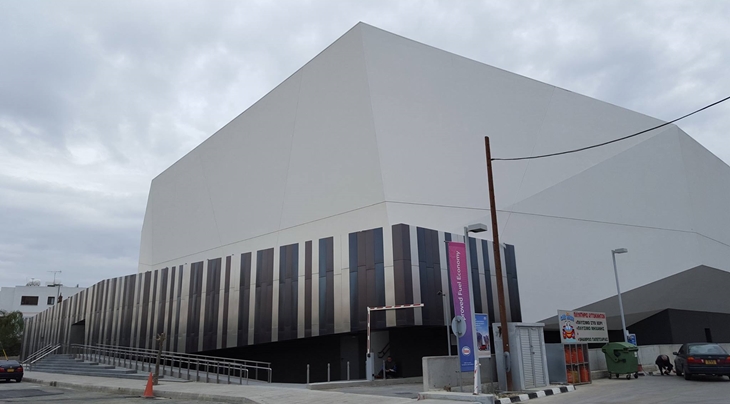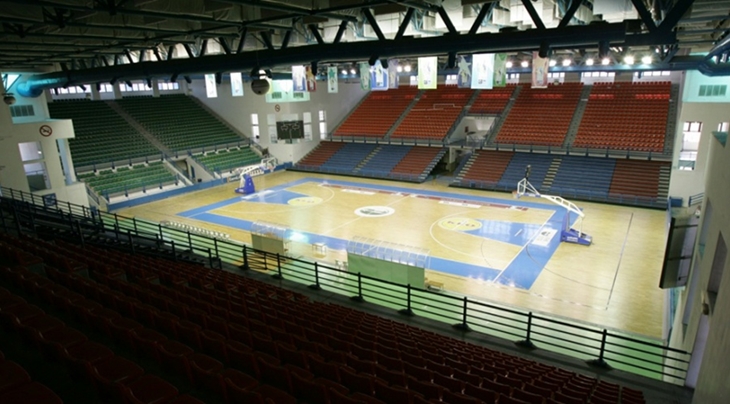Nicosia
Population: 325,760 (2011 census)
Nicosia is the capital and largest city on the island of Cyprus, as well as its main business centre. It is also the capital and seat of government of the Republic of Cyprus, and as such is the farthest southeast of all EU member states' capitals. It has been continuously inhabited for over 4,500 years and has been the capital of Cyprus since the 10th century.
-
Nicosia, the island's capital for more than 1000 years, emerges from the mountains of Kyrenia and spreads across the plains of Mesaoria. It is the largest city of Cyprus counting 325,760 inhabitants. In recent years, the construction industry recorded a rapid evolution and developed projects of vital importance with the regeneration of Eleftheria's Square being the most impressive. Moreover, Nicosia established itself as the financial capital and the major international trading centre of the island.
There are basic historic assumptions that the city has been continuously inhabited since 2500 BC, Bronze Age. The first residents settled in the fertile plain of Mesaoria, an area which later became a city-state by the Achaeans and named as Ledra. In the 4th century AD Cyprus came under the Byzantine Empire while in 965 AD Nicosia was entitled as the island's capital. Throughout the Byzantine period Nicosia was also the seat of the Archbishop.
When Richard the Lionheart arrived in Cyprus, in 1191, he seized the island by Isaac Comnenus, the Byzantine emperor, and sold it to the Knights Templar. Then the latter sold it to Guy of Lusignan, King of Jerusalem, and thus Cyprus was under Frankish occupation from 1192 until 1489. At each state of rule, Frankish, Venetian (1489-1570) and then Ottoman (1570-1878), Nicosia was the administrative and religious seat of the conquerors, while during the Ottoman rule it maintained at the same time the seat of the Greek Archbishop. Residents remained inside the Venetian walls up to the British Administration (1878-1955), when the roads connecting the city with the other coastal ones were completed.
When independent status was formally established in Cyprus, Nicosia, in 1960, was the capital of the independent Republic of Cyprus. However, due to the riots of 1963-1964, the capital was divided into the Turkish Cypriot and Greek Cypriot parts and it remains up-to-date the only divided capital.
Despite the above-mentioned unfavourable circumstances, Nicosia managed to be the political, business and financial center of Cyprus. It hosts the headquarters of Cypriot banks, international companies such as the big four audit firms PWC, Deloitte, KPMG and Ernst & Young and many Cypriot newspapers, as well. Moreover, the capital exhilarates by the great student community studying in the city's five universities, four of which are private (University of Cyprus, University of Nicosia, the European University, Open University and Frederick).
Nicosia is a city blessed with historic and cultural reserves. Ledra Street is now a historical monument itself. A walk in the traditionally busiest shopping street in the capital leads to the more lively part of the old town with its narrow streets, art-cafés and bars. In the eastern part of Ledra one can see Faneromeni Square, which was the center of Nicosia up to 1974. Also, the Archbishop Kyprianou is a memorable square where the seat of Archbishop, thus the heart of the Cypriot Orthodox Church, is located.
The Venetian walls with the three gates surrounding the old city and closing outside modern Nicosia, are undoubtedly a special landmark within the capital. Each of the gates is responsible for connecting the city with the seafront of Cyprus. The Kyrenia Gate leads to the northern part of the island, the Famagusta one to Famagusta, Larnaca, Limassol and Karpasia, while Paphos Gate to Paphos and the rest of the western Cyprus. The walls enclose the historic Eleftheria Square, where the Town Hall, the Post Office and the Municipal Library are situated.A tour within the capital should certainly include a visit to its museums. It is widely known that the largest and richest collection of worldwide antiquities on the island is kept in the Archaeological Museum in Nicosia. Other notable museums are the Byzantine, Folk Art, the Museum of Struggle, with documents and photographs from the National Liberation Struggle 1955-1959 and finally Levendis Municipal Museum which outlines the lifestyle of the capital's inhabitants during the different periods, from antiquity up to now.
Lastly, there is no doubt that Nicosia fairly claims the title of Cyprus' cultural centre. Aside from the interesting places that one can discover in both, the modern and old site, the city can offer the utmost satisfaction to the lovers of arts. From both, private and public sector initiatives, musical and theatrical events are regularly organised in the various theatrical stages of the city, Theatre Ena, Latsia Municipal Theatre, New Stage, Skali Aglantzias and more. Furthermore, the Cyprus Symphony Orchestra and the Cyprus Theatre Organisation are established in Nicosia.
-
Larnaca International Airport
Larnaca International Airport is located about 5 km from Larnaca and 50.5 km from Nicosia. For more information, maps and flight schedules please visit the official website of the airport.
Phone: 77778833 (local calls only), +357 25 123022 (international calls only)
Fax: +357 24 643633
Email: info@hermesairports.com
Address: Larnaca International Airport, P.O. Box 43027 P.C. 6650 Larnaca, Cyprus
Paphos International AirportPaphos International Airport is located about 15 km from Paphos and 144 km from Nicosia. For more information, maps and flight schedules please visit the official website of the airport.
Phone: 77778833 (local calls only), +357 25123022 (international calls only)
Fax:+357 26 007100
Email: info@hermesairports.com, customer.services@hermesairports.com
Address: Paphos International Airport, P.O. Box 62320 P.C. 8063 Pafos, Cyprus
-

Agios Dometios Arena
All games of the FIBA U16 European Championship Division C 2016 will be played in Agios Dometios Arena. It is located in the Agios Dometios area, about 4 km from the city centre of Nicosia. The capacity of the stadium is 1,250 spectators.
Address: 156, Grigori Afksentiou, 2365, Agios Dometios, Nicosia

Tassos Papadopoulos Eleftheria Arena
Tassos Papadopoulos Eleftheria Arena will be used for the teams' practices. It is located in the Engomi area which is about 5 km away from the city centre of Nicosia. The capacity of the stadium is 6,500 spectators.
Address: 1, Leoforos Makariou Athlitikou Kentrou, 2400. Engomi, Nicosia